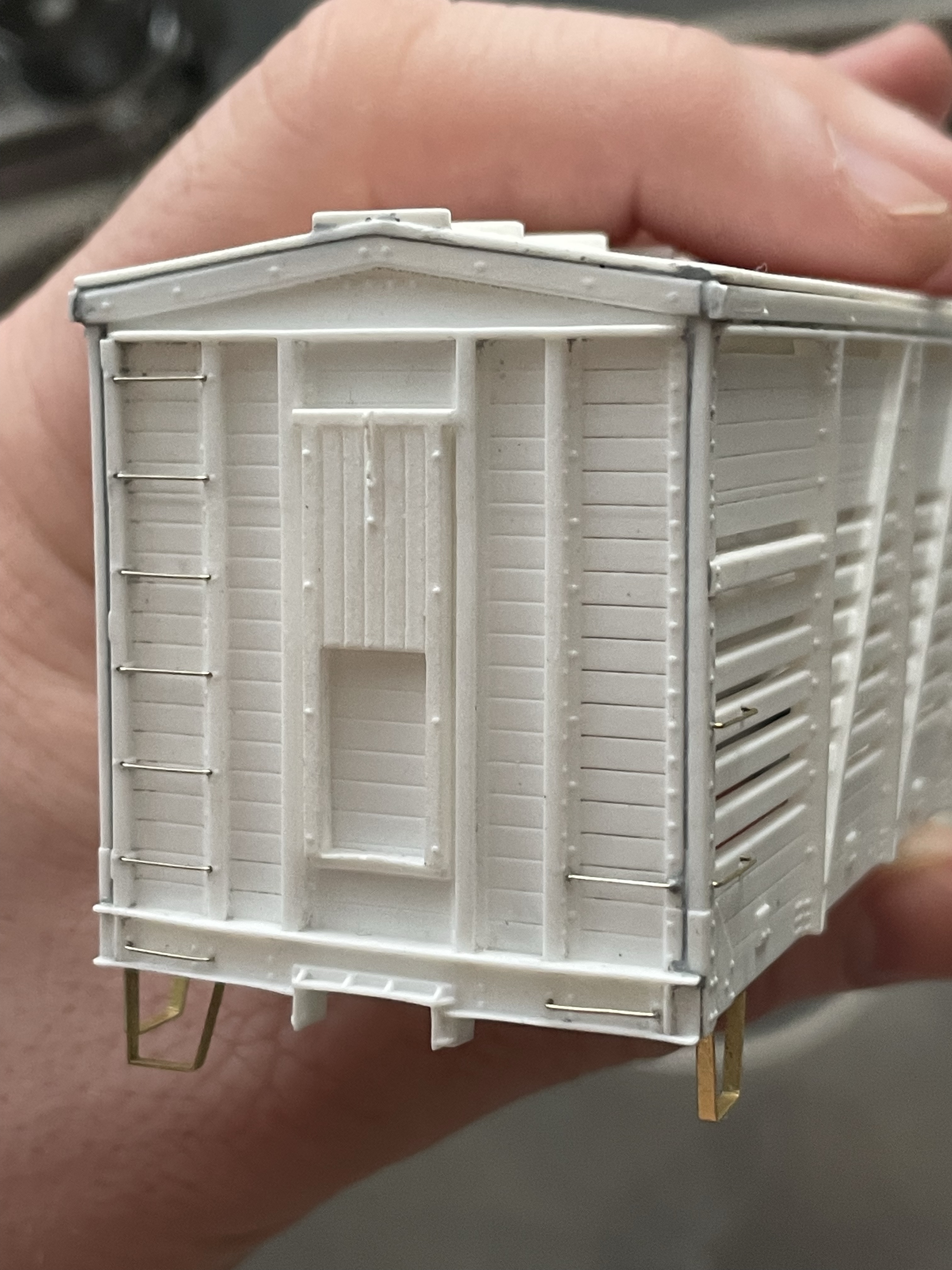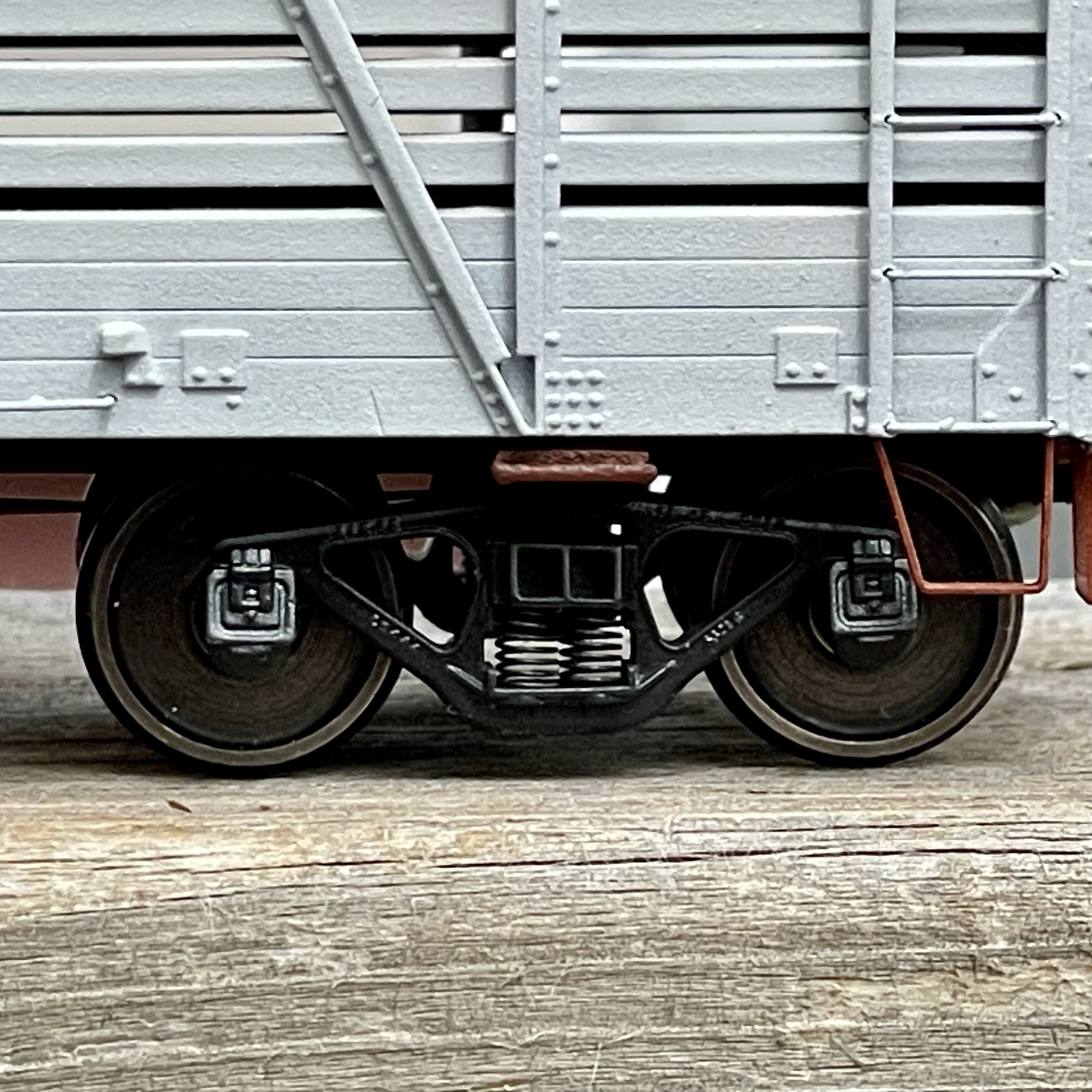
When I started considering S-scale as a viable adjustment for the Vernon River plan, I went straight to the top of the Canadian 1:64 food chain for advice. Trevor and David took me in and sorted me out with everything I needed to know in the world of 1:64, what equipment I needed, and where to get it and I am very grateful for their help. It also turns out S-Scalers are apparently hoarders, so I didn’t have to go terribly far to find 90% of the rolling stock and power I need for the entire layout.
One of the places they sent me, however, was to Simon Parent to get my hands on one of his flat resin Stock Car kits. Simon didn’t have any left but was kind enough to track one down for me from someone he knew selling one.

The kit’s castings were very clean and crisp and the kit included all parts required for success except for trucks. Luckily, Simon is in the business of 3D printed trucks and sold me some very beautiful sprung trucks that are accurate for the car along with custom wheelsets.



In my initial experience, this build was a breeze compared to anything I’ve done in 1:87, and though I had a minor issue with shrunken side castings, a sanding block and some Mr. Surfacer solved that with very minimal heart-ache.

Painting the car, I used my regular mix of Vallejo paints to get the CNR boxcar red, prepped for decals with Future and after decal-ing with the included decal sheet, I sealed it off with another coat of Future and some Vallejo Matt Varnish.



One thing I’m not entirely sold on in the world of S-scale is the oversized #802 Kadee couplers. I think what I may do is design and 3D print a coupler pocket that mirrors the footprint of an 802 pocket, but accepts a (1:87 scale) #158 whisker coupler, and then just continue to use Kadee #158’s.
Somewhere in the mail is a brass River Raisin 44 Tonner, brass CNR combine kit as well as a wide array of other 1:64 goodies. I’ll be sure to do an ‘unboxing’ post when the package arrives.
CM

I believe Sergent used to offer S scale couplers, and Inventive Models is planning to offer them in future….there’s at least one other guy working on offering a Sergent compatible design, he may be considering other scales too. Check Facebook or the Sergent groups.io group, or message me.
LikeLike
Sergents might work in Calvin’s case, if he’s building a diorama with limited operation. And every modeller has different goals in the hobby so their experience will be different.
I used Sergent couplers on a narrow gauge layout and thought they worked well but I didn’t do a lot of operating. I liked them enough that when I planned my S scale CNR Port Rowan layout, I designed it from the outset to use Sergents – ensuring I had good lighting and good reach-in access free of foreground obstacles where coupling/uncoupling would take place (and testing that for both left- and right-handed operators).
But in operation, I found the Sergents were a never-ending source of frustration. When I realized that all our post-op discussions were dominated by the coupler issues, I decided that wasn’t what I wanted guests to take away from the experience so I switched to Kadees.
Couplers were never a problem after that.
LikeLiked by 1 person
All fair points. I like Sergents but my goals include limited operations, focus more on diorama, modelling. There will be operations, but limited, and often more watching the train go by sorts.
LikeLiked by 1 person
Yep – as I said: modellers have different goals and Sergents work for some of those. But not all. Anybody considering them should do some tests on their layout before they commit.
LikeLiked by 1 person
Welcome, officially, to S scale. I entered the scale about 15 years ago and it was the best thing ever for my hobby.
S is in a sweet spot. The models being larger than HO makes it particularly attractive for modelling smaller prototypes such as 44 Tonners (and small steam: my S scale CNR 2-6-0s are about the length of an HO 2-8-2). The added volume and mass means S scale models of these small prototypes run well and can accommodate DCC decoders and electronic flywheel modules, while still having room for decent sized speakers for DCC sound.
At the same time, S is easier to live with than O when one wants to model more of the scene around the railway. Structure footprints are more manageable and one can model scenes of more depth before reach-in access becomes a problem.
S has a small community of craftsman-level modellers – but definitely benefits each time someone with your skills joins up. I look forward to seeing what you do with S and know your work will encourage others to give 1:64 a look!
LikeLike